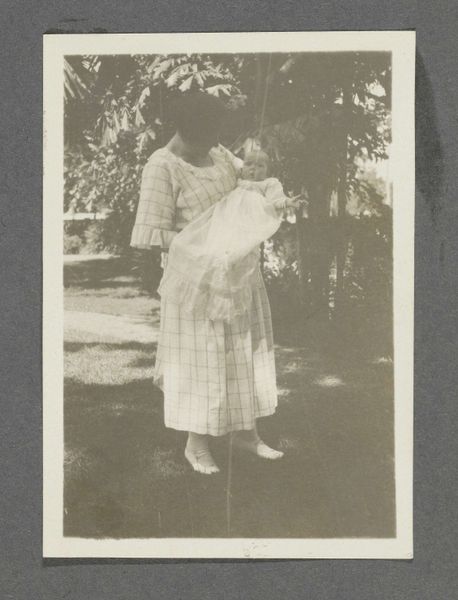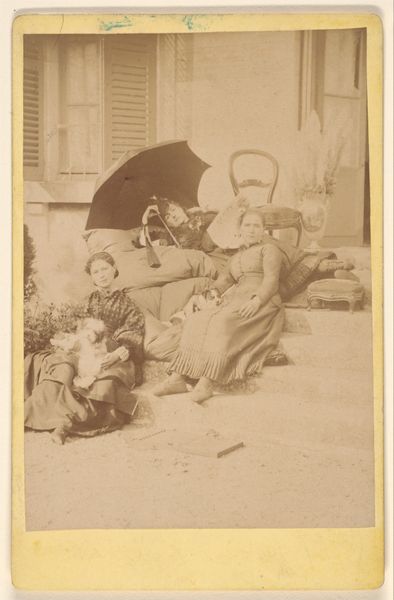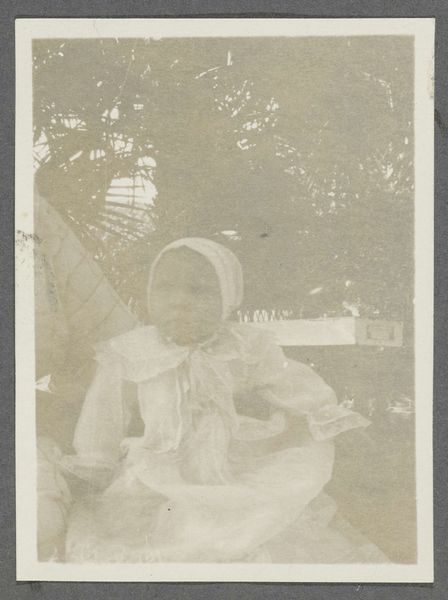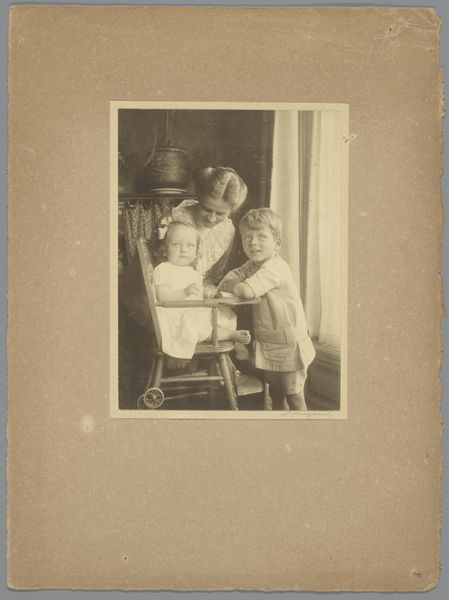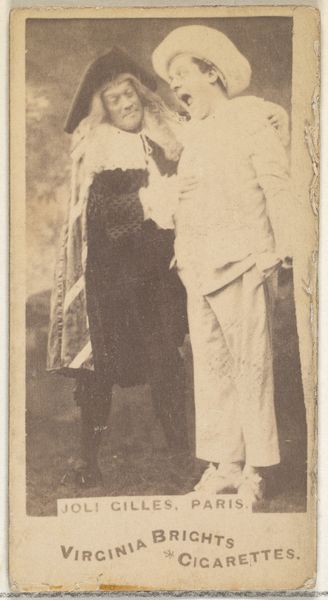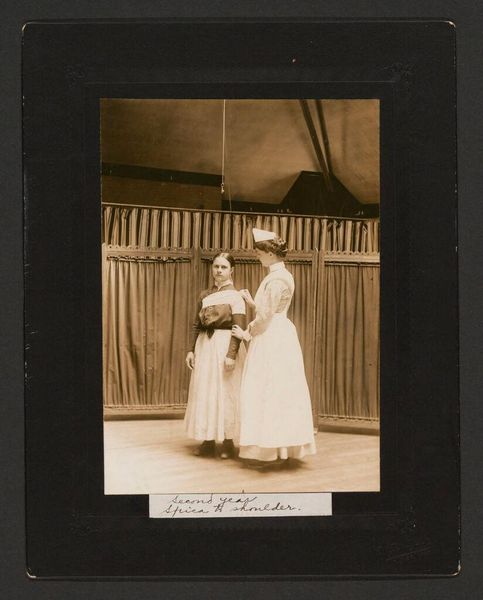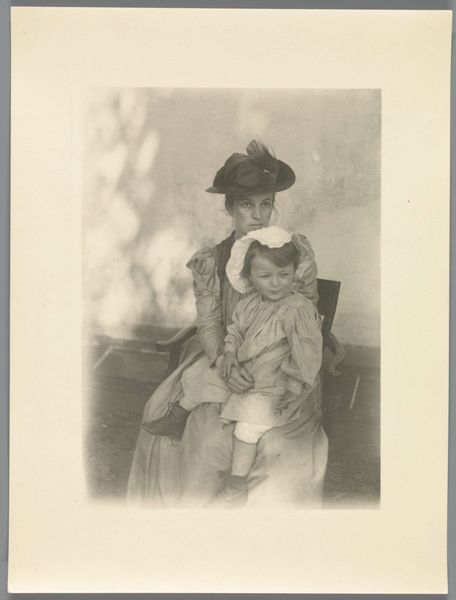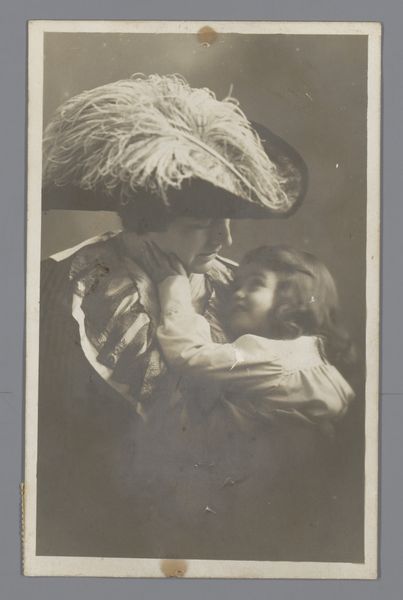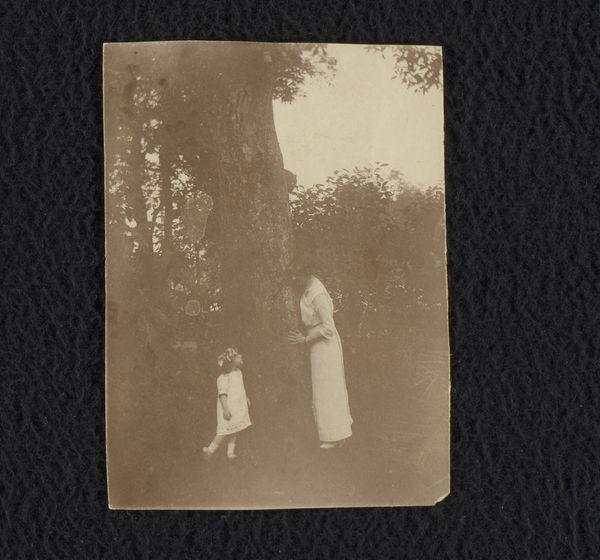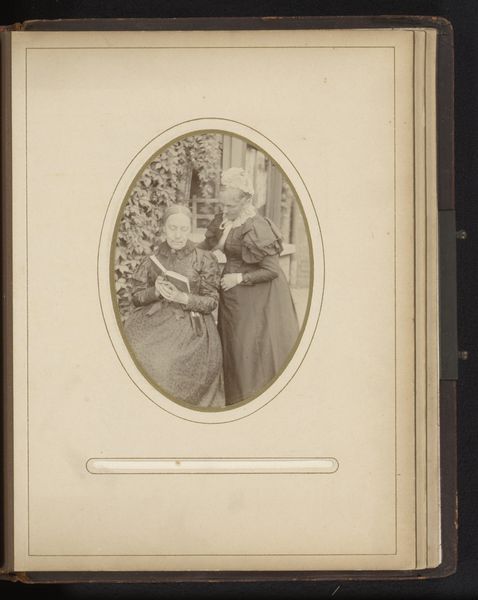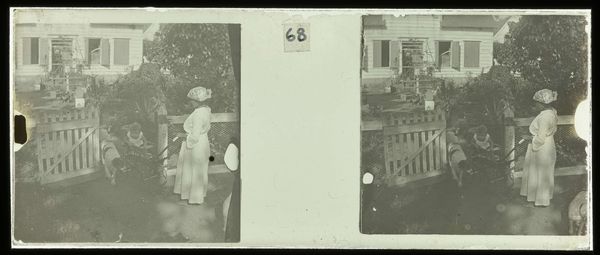
plein-air, photography
#
portrait
#
garden
#
plein-air
#
landscape
#
photography
#
child
#
realism
Dimensions: height 84 mm, width 60 mm
Copyright: Rijks Museum: Open Domain
Editor: So, this is a photograph from 1921, "Klaas en Tiny Kleiterp in een tuin in Pangka op Java" -- roughly, Klaas and Tiny Kleiterp in a garden in Pangka, Java. The material is photography, taken en plein air, presumably by a member of the Kleiterp family. What do you make of this image? Curator: What interests me most here is the production. Photography was becoming increasingly accessible, yet remains embedded in colonial power structures, evidenced by a Dutch family on Java, Indonesia. Editor: So the materials – the photographic chemicals and paper – connect directly to colonialism? Curator: Precisely. Think about the extraction required for those materials, the labor involved in their production and distribution, and who profits from it all. Even the “plein-air” designation points to the practice of documenting and claiming landscapes. Editor: I hadn’t thought about the materiality of photography itself in that way before, more than just taking the shot. Curator: The wicker chair also stands out. Likely made locally, it's interesting to consider the availability of materials, the craftsmanship involved. The image itself becomes a commodity, circulating images of "exotic" locales for Western consumption. How does the staged nature of the portrait also play into that? Editor: Good point! The children aren’t interacting naturally; there is an awareness of being seen. This wasn't some spontaneous snapshot; labor was involved in directing them. Thank you, that's a new perspective for me! Curator: And for me as well, looking at it through a material lens highlights often overlooked historical layers.
Comments
No comments
Be the first to comment and join the conversation on the ultimate creative platform.
